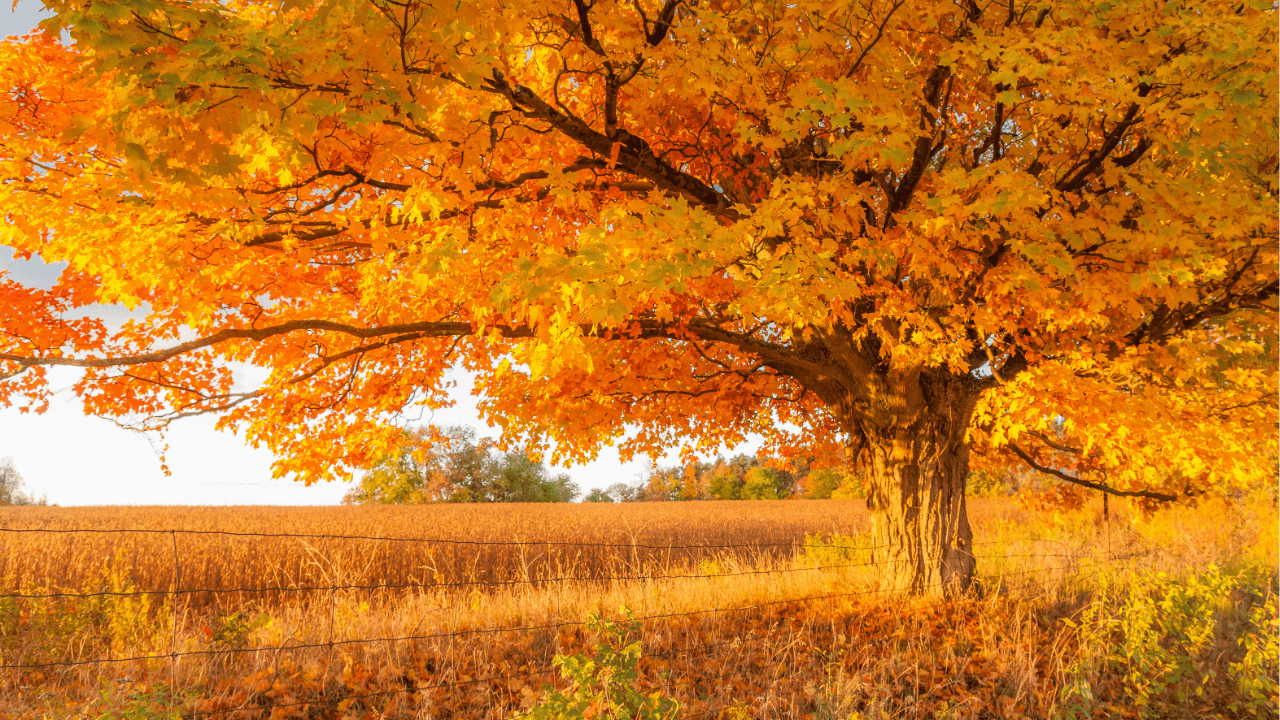Maple trees are known for their vibrant fall colors and graceful canopies, but they require proper care to thrive. Whether you’re growing a sugar maple or a red maple, it’s crucial to focus on their unique needs. Here are ten specific tips to help you maintain a healthy, robust maple tree that will enhance your garden for decades to come.
1. Choose the Right Location
Selecting the right location for your maple tree is the foundation of its success. Maples prefer areas with well-drained soil and adequate sunlight, though some varieties, like the Japanese maple, thrive in partial shade. Ensure your tree has enough room to grow, as these trees can become large, with spreading root systems.
When planting, avoid areas prone to waterlogging, which can lead to root rot. Maples generally do best in slightly acidic to neutral soils, so testing your soil’s pH before planting can help ensure optimal growth.
2. Water Consistently, Especially in Dry Seasons
Maple trees are not drought-tolerant, especially when young. Regular watering is crucial, particularly during the first few years of growth. Water deeply, ensuring the soil remains moist but not soggy. Established trees will need supplemental water during prolonged dry periods, especially in the hot summer months.
Mulching around the base of the tree can help retain moisture and regulate soil temperature. However, avoid piling mulch directly against the trunk, as this can encourage pests and diseases.
3. Mulch Properly to Protect Roots
Mulching plays a vital role in maintaining the health of your maple tree by keeping the roots cool and moist. Apply a 2-3 inch layer of organic mulch like wood chips or shredded leaves around the tree’s base, but leave a gap of a few inches around the trunk to prevent rot.
Mulching also helps suppress weeds that can compete with the tree for nutrients. Replenish the mulch annually or as needed, and always check to make sure it hasn’t become too thick or compacted, as this can prevent water from reaching the roots.
4. Prune at the Right Time
Pruning your maple tree at the right time will encourage healthy growth and prevent disease. It’s best to prune in late winter or early spring before new growth begins. This helps to avoid the risk of sap bleeding, which can attract pests and diseases.
Remove dead, damaged, or crossing branches to maintain a balanced shape and good air circulation. Avoid heavy pruning, as this can stress the tree and cause poor growth. A light touch is all that’s needed to promote a strong, structured canopy.
5. Fertilize in Moderation
Maple trees do not require excessive fertilization but will benefit from a balanced, slow-release fertilizer applied in early spring. Too much nitrogen can encourage leafy growth at the expense of root and structural development, so stick to a moderate amount based on your soil test results.
Organic fertilizers like compost can also be effective in providing long-term nutrition. Apply the fertilizer evenly under the tree’s canopy, avoiding direct contact with the trunk, and water thoroughly after application to help the nutrients reach the root zone.
6. Protect from Sunscald
Young maple trees, especially those with thin bark, are susceptible to sunscald during the winter months. To protect your tree, wrap the trunk with tree wrap or use a protective paint designed for trees. This will shield the bark from extreme temperature fluctuations, which can cause cracking.
Remove the protective wrap in early spring to avoid trapping moisture against the bark. Over time, as the bark thickens, the tree will naturally become more resistant to sunscald, but young trees need extra care in this regard.
7. Prevent Pests with Regular Inspections
Maple trees can be targeted by pests like aphids, scale insects, and borers. Regularly inspect your tree for signs of infestation, such as distorted leaves, sticky residue, or holes in the bark. Early detection allows for quick intervention and reduces the risk of severe damage.
Consider using insecticidal soap or neem oil for minor infestations, and encourage natural predators like ladybugs in your garden. For severe infestations, you may need to consult with a professional to implement more targeted treatments.
8. Manage Diseases Promptly
Maples are vulnerable to diseases like verticillium wilt, tar spot, and anthracnose. Spotting symptoms early, such as wilting leaves, black spots, or dieback, is essential for managing these diseases. Remove and dispose of affected leaves and branches to prevent the spread of fungal infections.
For diseases like verticillium wilt, there’s no cure, but improving the overall health of the tree with proper watering, mulching, and avoiding injury to the roots can help prolong its life. Fungicides may help with some fungal issues, but early detection is always the best defense.
9. Provide Winter Care
Winter can be tough on maple trees, particularly young ones. Protect your tree from harsh winter winds by creating windbreaks or wrapping young trunks in burlap. Heavy snowfall can also damage branches, so be sure to gently remove snow buildup when possible.
For trees in areas with heavy road salt use, protect them from salt spray, which can cause browning or dieback. Either shield the tree with burlap or apply a thick layer of mulch to help reduce salt uptake through the roots.
10. Monitor Soil Health Regularly
Healthy soil is crucial for the long-term success of your maple tree. Conduct soil tests every few years to check nutrient levels and pH. Maples thrive in slightly acidic soils, and imbalances in nutrients can lead to poor growth or vulnerability to diseases.
Amend the soil with compost or organic matter as needed, and avoid compacting the soil around the tree’s roots. Loose, well-aerated soil promotes healthy root growth, which in turn supports a thriving canopy.

